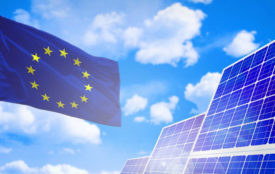Germany goes aggressive on renewables with the latest amendment of the EEG asking for highly optimistic annual RE additions, says Globaldata
“Overall, GlobalData expects, with the current endeavors, generation from renewable energy (RE) is set to shape up to around 50-60% of the overall generation by the conclusion of the decade.”
The more rigid targets brought around by the latest revision to Germany’s renewable energy act (EEG) in June aims for the country to achieve 65%, instead of the originally targeted 50%, of its electricity consumption comes from renewable sources by 2030. Such stricter targets would mean that, during 2021-2030, the country’s solar photovoltaic (PV) and onshore wind would need over 2GW and 3GW of annual installations, respectively – a highly optimistic target in such an uncertain scenario. Making the targets more stringent may be in line with the broader EU green deal agenda and sustainability objectives, but such a call – made a year before elections – may be fuelled by a political motivation rather than be an achievable goal, says GlobalData, a leading data and analytics company.
Somik Das, Senior Power Analyst at GlobalData, comments: “For all of the nation’s renewable sectors to be GHG neutral by 2050, the electricity industry needs to evolve at a much faster pace than has been seen in recent years. Solar PV is now aimed to see a deployment of 18.8GW of capacity from 2021 to 2028, with planned capacity at increments of 1.9-2.8GW. However, with respect to the country’s capacity mix in 2019, Germany would need to add around 4.6GW annually to meet the target. In reality, the average solar PV annual installations are likely be around 1.4-1.5GW, according to GlobalData estimations.
While annual solar PV installations in Germany have picked up in the last few years, onshore wind installations seemed to be on the back foot and so the faster pace required is even more questionable.
Das adds: “In order to achieve the new target, 16.7GW of onshore wind capacity is planned to be auctioned by 2025. Therefore, to meet the 2025 target, the country would need to conduct more than 4GW of annual onshore wind installations. This is a considerable stretch, as it would mean that the already slumped segment would need to install more than the 3.1GW average seen annually during 2015-19.








